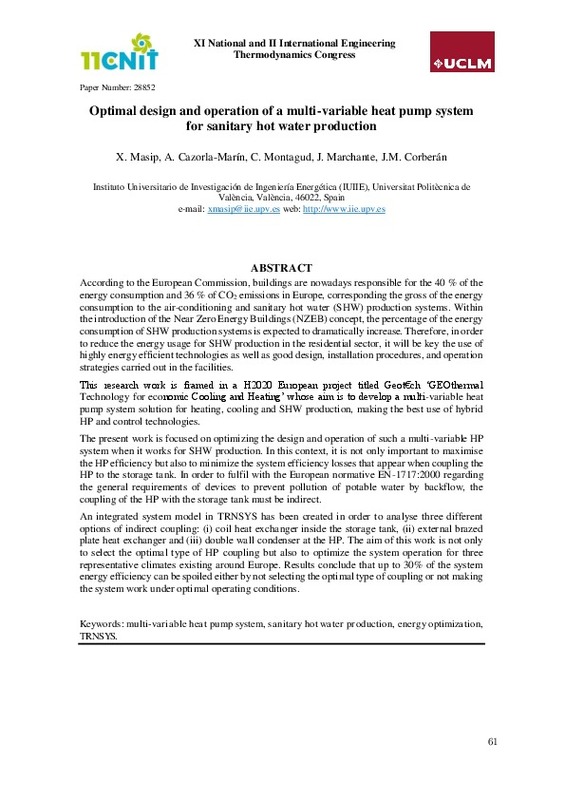JavaScript is disabled for your browser. Some features of this site may not work without it.
Buscar en RiuNet
Listar
Mi cuenta
Estadísticas
Ayuda RiuNet
Admin. UPV
Optimal design and operation of a multi-variable heat pump system for sanitary hot water production
Mostrar el registro completo del ítem
Masip Sanchis, X.; Cazorla-Marín, A.; Montagud- Montalvá, C.; Marchante-Avellaneda, J.; Corberán, JM. (2019). Optimal design and operation of a multi-variable heat pump system for sanitary hot water production. Universidad de Castilla-La Mancha. 61-71. http://hdl.handle.net/10251/129321
Por favor, use este identificador para citar o enlazar este ítem: http://hdl.handle.net/10251/129321
Ficheros en el ítem
Metadatos del ítem
| Título: | Optimal design and operation of a multi-variable heat pump system for sanitary hot water production | |
| Autor: | ||
| Entidad UPV: |
|
|
| Fecha difusión: |
|
|
| Resumen: |
According to the European Commission, buildings are nowadays responsible for the 40 % of the
energy consumption and 36 % of CO2 emissions in Europe, corresponding the gross of the energy
consumption to the air-conditioning ...[+]
|
|
| Palabras clave: |
|
|
| Derechos de uso: | Reserva de todos los derechos | |
| ISBN: |
|
|
| Editorial: |
|
|
| Título del congreso: |
|
|
| Lugar del congreso: |
|
|
| Fecha congreso: |
|
|
| Código del Proyecto: |
|
|
| Agradecimientos: |
|
|
| Tipo: |
|







